This is one in a series of posts on the Nikon Z9. You should be able to find all the posts about that camera in the Category List on the right sidebar, below the Articles widget. There’s a drop-down menu there that you can use to get to all the posts in this series; just look for “Z9”.
My Smallrig Z9 bracket came today, beating the RRS counterpart which was actually ordered far earlier.
It’s a two-piece assembly, with a bottom plate — shown above — that has a nice rubber contact pad and an anti-rotation screw.
The underside of the bottom plate has SmallRig’s usual slot head screw for engaging the camera’s tripod mount. In case you’re confused about what the anti-rotation pin is for, they tell you.
I hate the slot head 1/4-20 screws that SmallRig supplies, but they do have a screw kit that has replacements. The screw that came with the bracket is in the middle above, and two screws from the SmallRig kit flank it. I used the on on the left, which looks to be about a millimeter longer than slot head screw.
Here’s the base plate on the camera, attached with the Allen head screw I installed.
I don’t usually use the portrait orientation parts of these brackets, but the above bracket seems to be well made and light.
Here’s the inside of the upright extension.
In the past, SmallRig brackets have not always been compatible with RRS cam clamps, but this one is just fine.
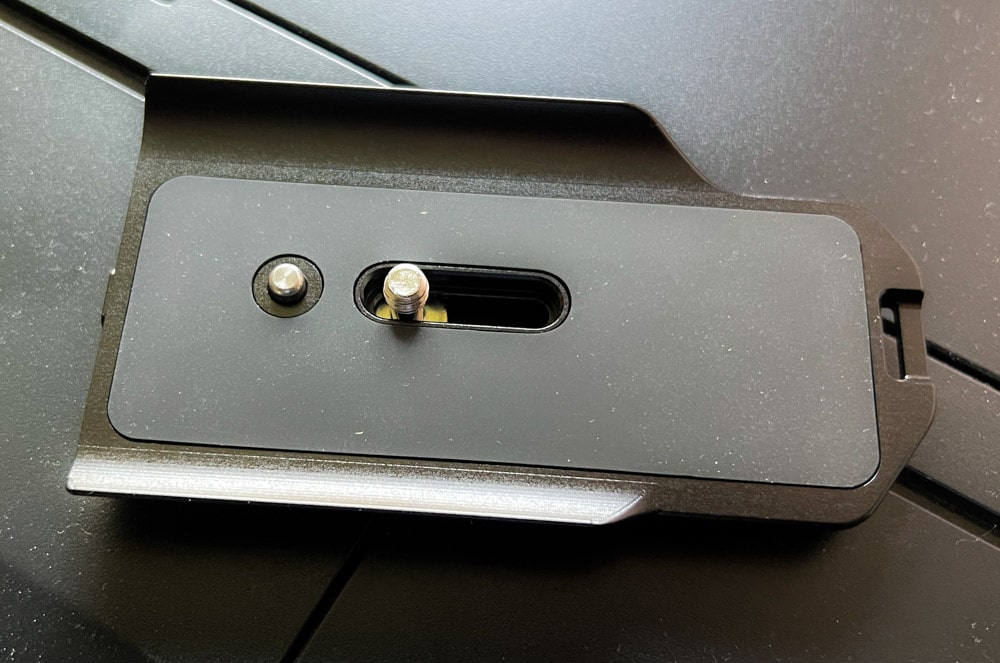
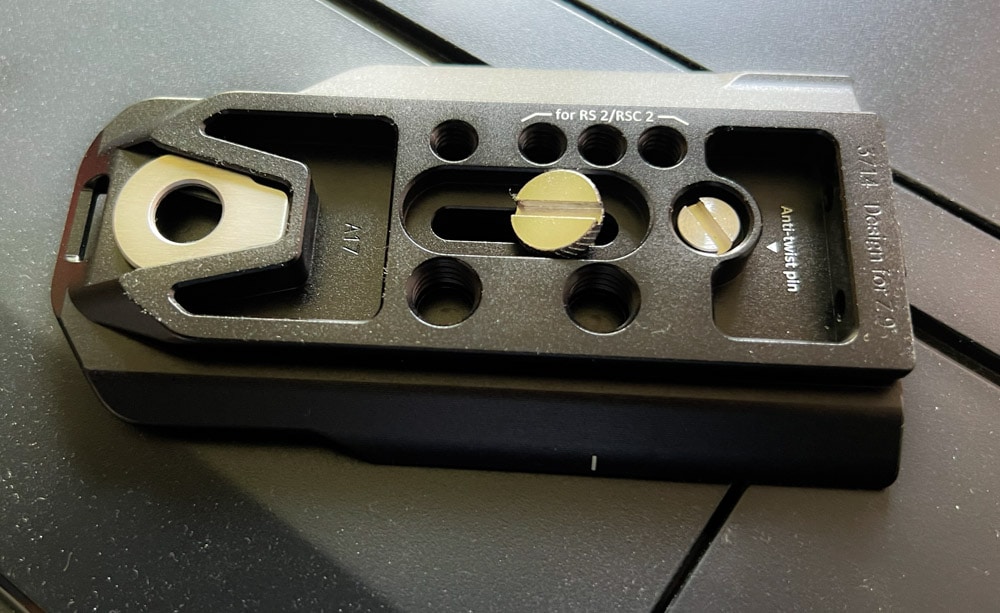
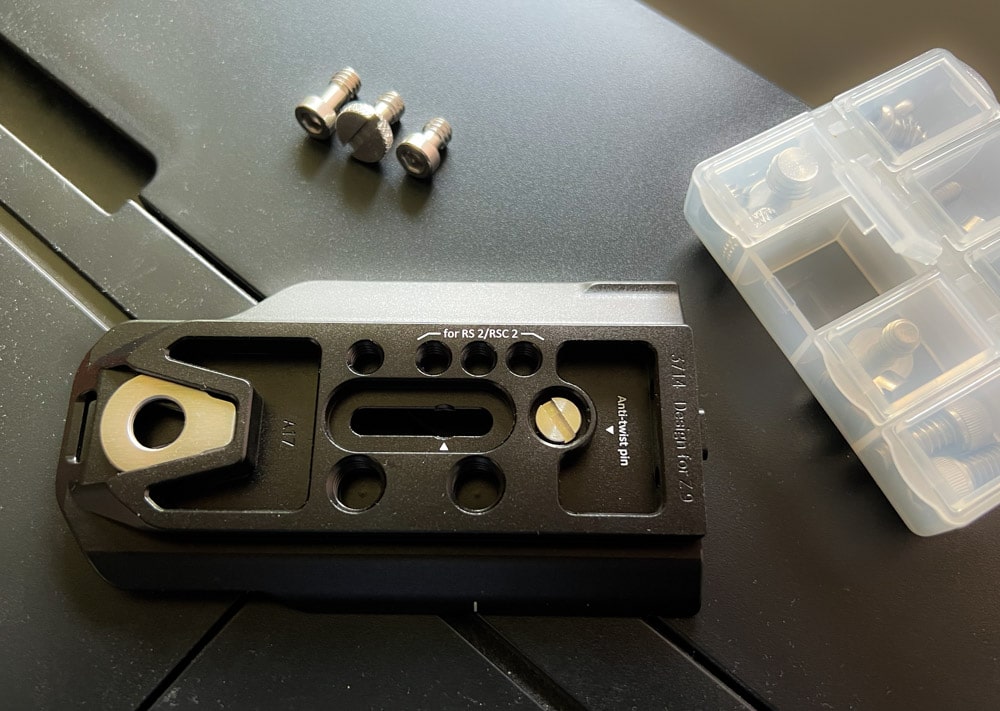
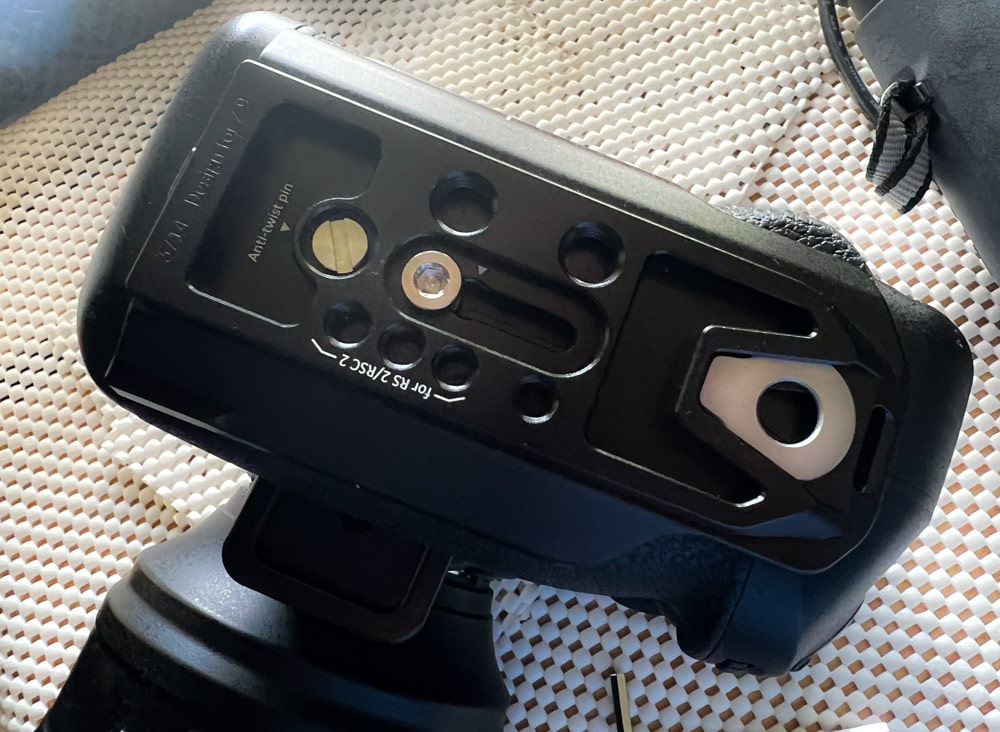
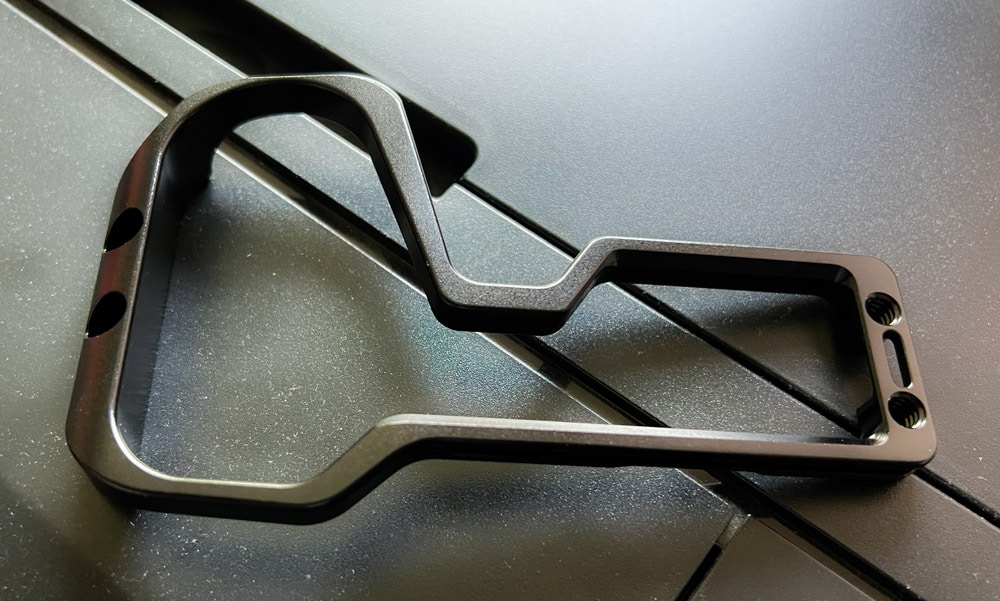
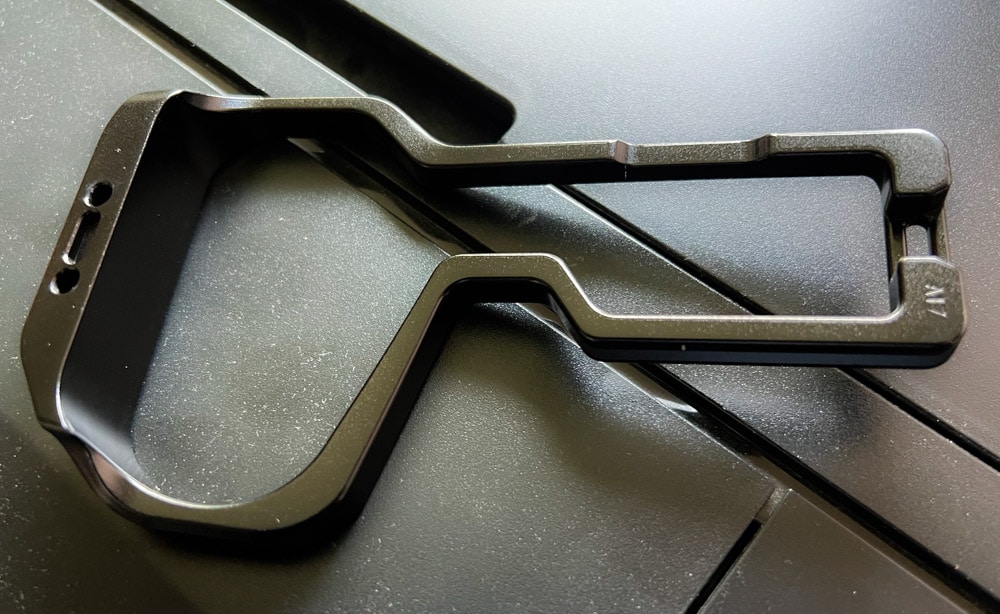
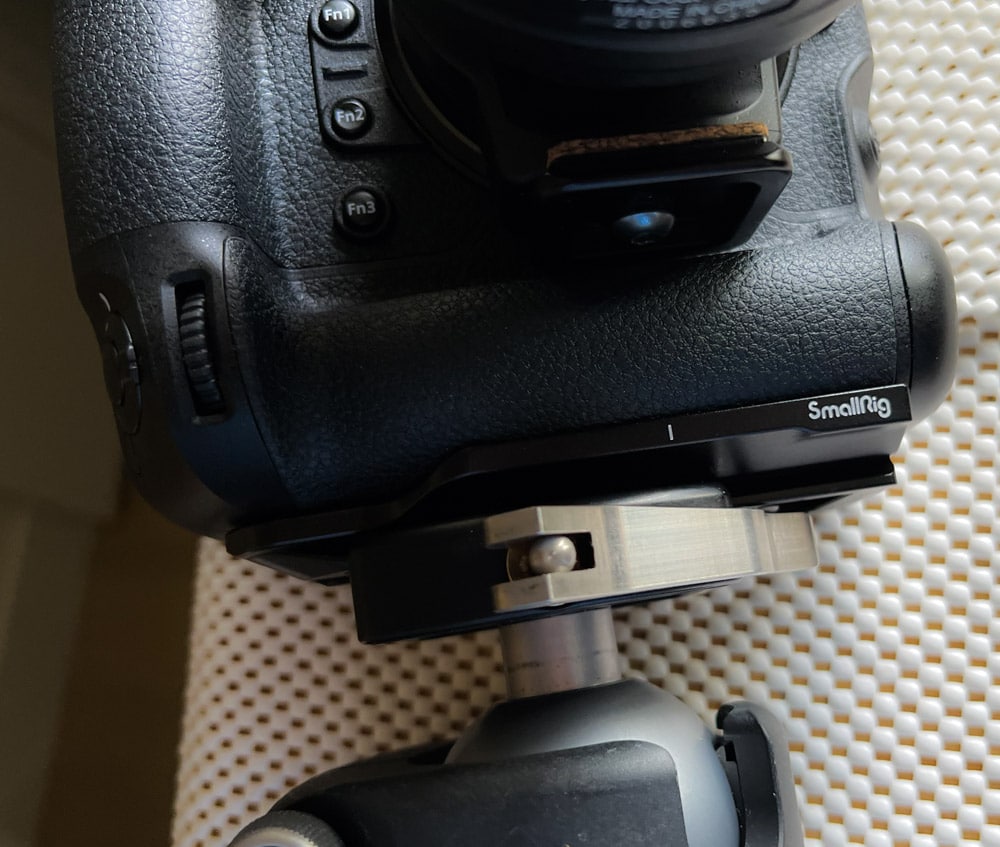
Hi Jim,
I saw your review of the Smallrig Z9 l-brackets. You mentioned that you are rarely use brackets in portrait mode. I do, in particular for panoramas and noticed a problem, The bracket has markers to help alignment with the center of the lens mount. Not too relevant for normal shooting, but essential for panos. I find the bracket flexes a small amount when aligning the marker with the center of the clamp. All screws have been firmly tightened. You can check this by gripping the camera and apply some forward pressure.
Camera I
Camera I
Camera |
—-+—- |
—+—
Clamp
Tripod
There is no flex when mounting it horizontally. The flex in portrait mode can be minimized by mounting off center, i.e. by shifting the bracket as far to the left as the clamp allows:
Camera I
Camera I
Camera |
—-+—- |
—+—
Clamp
Tripod
I would be keen to know if you observe this too and if the RRS bracket is more stable in portrait mode.
Kind regards,
Roland
Sorry for my crude ascii graphics. The plus signs in the first “picture” should be aligned. In the second “picture”, the plus sign representing the marker on the bracket should be to the *left* of the plus sign representing the center of the clamp. If mounted as shown, it would actually flex even a bit more.
Overall I think the Smallrig plate is quite well made but the vertical part should be firmer.
When I get my RRS bracket I’ll do a comparison.
I own a Smallrig Z9 bracket which I like a lot and use for both horizontal and vertical mounting. I too have replaced the slot head 1/4-20 screw with the one that comes in the Smallrig screen kit.
However, I have managed to lose the anti-twist pin on a field trip. Do you know the spec of this item? I need to procure one and it doesn’t come in the Smallrig screw kit.
Sorry, I don’t know that.